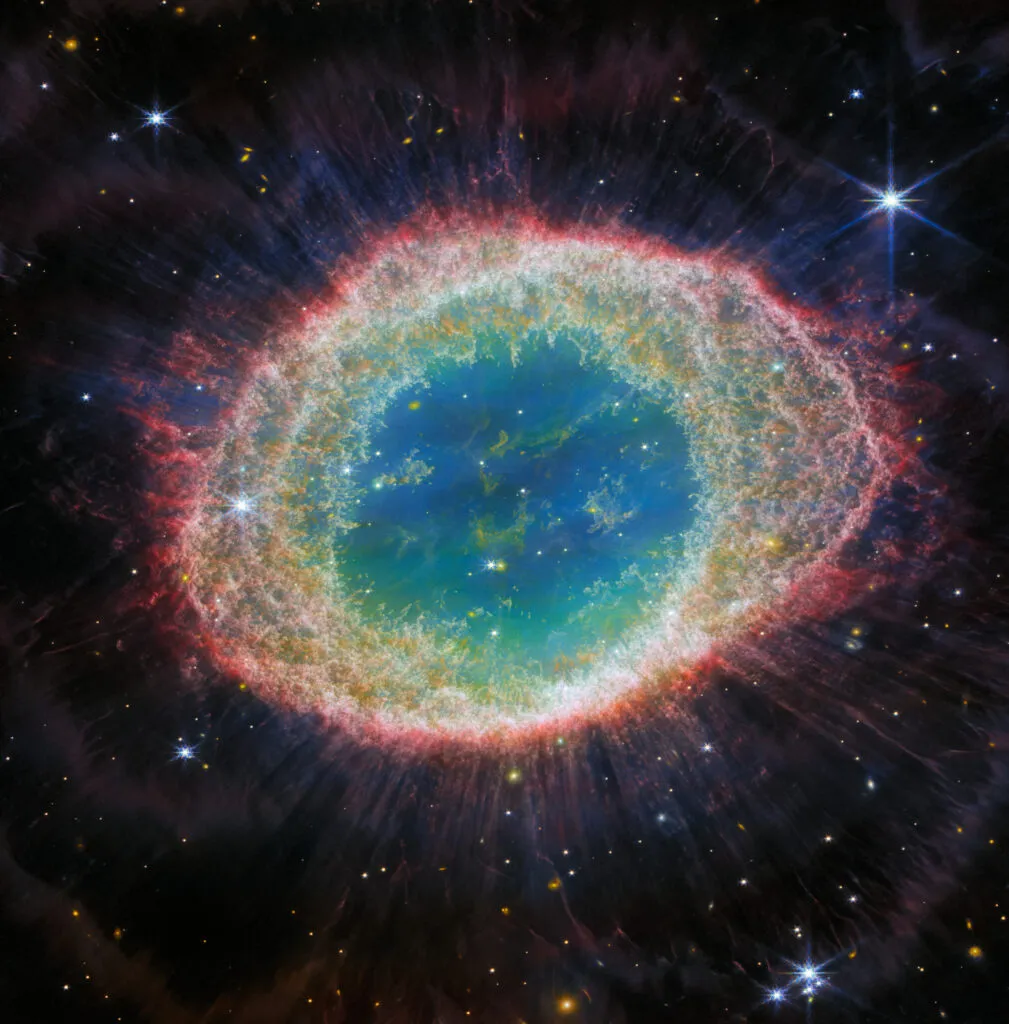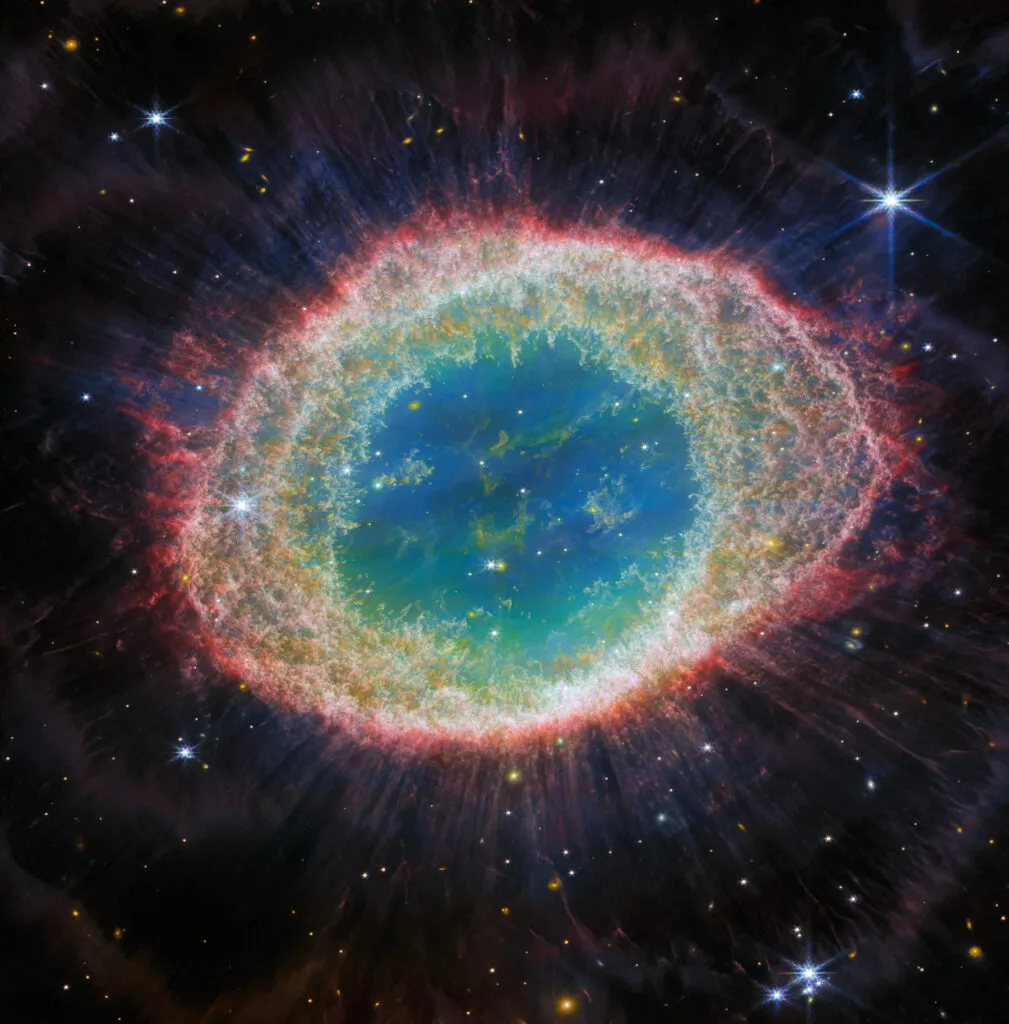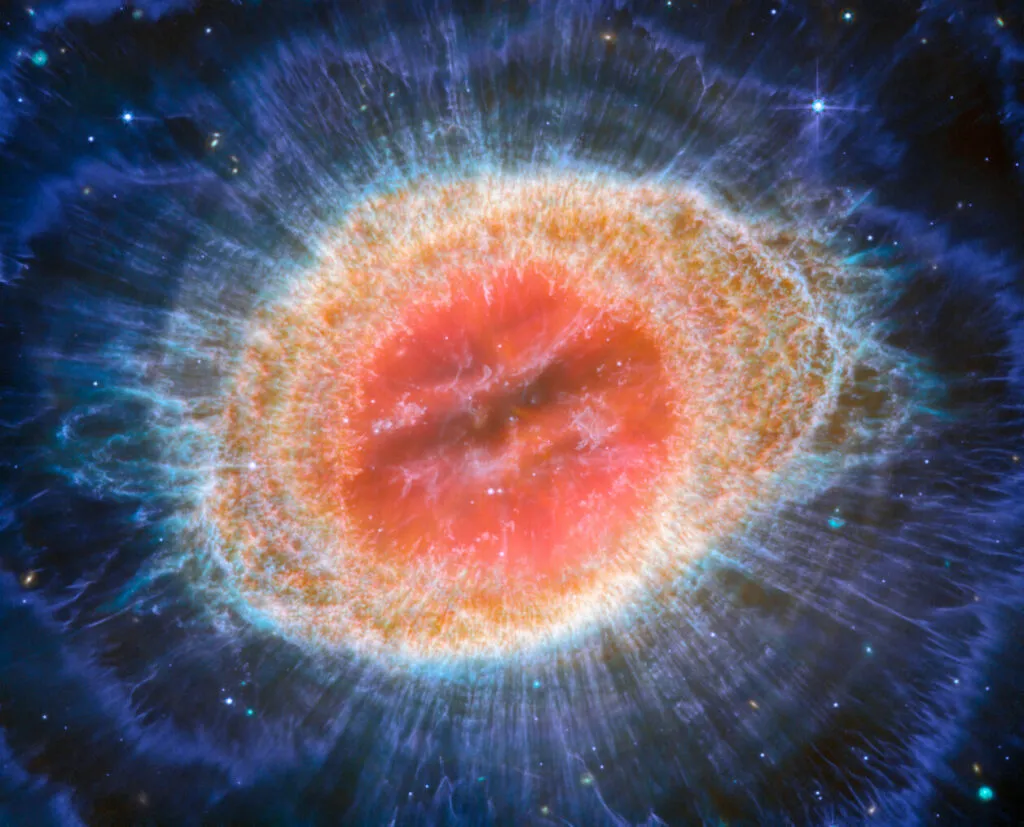

Credit: ESA/Webb, NASA, CSA, M. Barlow (University College London), N. Cox (ACRI-ST), R. Wesson (Cardiff University)
When a star like our Sun nears its end, it sheds its outer layers and fades into a glowing ghost in space called a planetary nebula. One of the most famous of these is the Ring Nebula, and thanks to NASA’s James Webb Space Telescope, we’ve just seen it in more detail than ever.
Webb used its NIRCam (near-infrared) and MIRI (mid-infrared) cameras to peer deep into the center of the nebula. What they saw surprised scientists: the inner ring that shines so brightly isn't smooth at all. It's covered in ~20,000 packed clumps of molecular hydrogen gas—each as heavy as Earth. Thin ring of PAHs (carbon-rich complex molecules) that shine, something scientists didn't expect to find here, is within that ring.

Credit: NASA
This new image of the Ring Nebula, captured by Webb’s Mid-Infrared Instrument (MIRI), unveils intricate details within the concentric structures surrounding the nebula’s outer ring. Around ten distinct arcs can be seen just beyond the main ring’s edge, believed to have formed through interactions between the central star and a low-mass companion orbiting at a distance similar to that between Earth and Pluto.
Other than the ring, there are weak spikes emitting from the star. These may be formed in the shadows of the densest clumps, beyond the radiation of the hot core. But the greatest astonishment was farther away: ten concentric arcs in the halo of the nebula. They seem to be spaced at regular beats—every 280 years or so.
That rhythm implies something interesting: perhaps the fading star has a companion that orbits far out, molding the gas as it departs, a dance partner reshaping the dance. Without a companion, it's hard to imagine how a roughly spherical star creates such graceful, striated forms.
This research is from the ESSENcE program (Evolved StarS and their Nebulae in the JWST Era), where scientists like Roger Wesson, Mikako Matsuura, and Albert Zijlstra. They seek to utilize Webb's powerful eyesight to understand star deaths, how they kick out vital elements like carbon and oxygen, and how they seed future stars and planets.
What we have learned from this is sweet and humble: the universe is far more intricate than we could ever have imagined. As stars die, they leave behind exquisitely engineered buildings—and now, thanks to Webb's vision, we can finally see them.
Sign up to our newsletter and follow us on social media for more interesting updates like this!